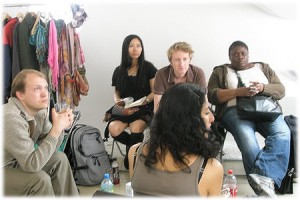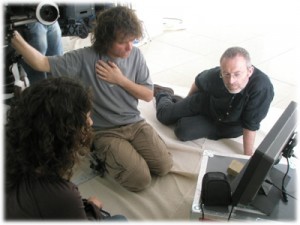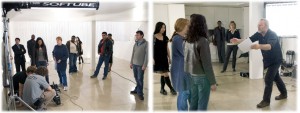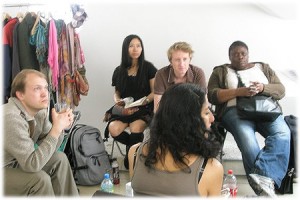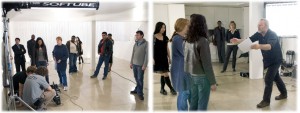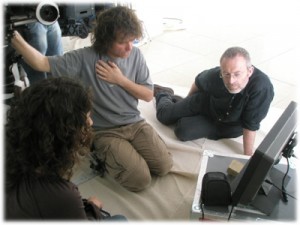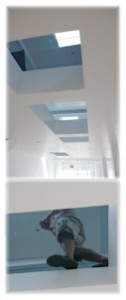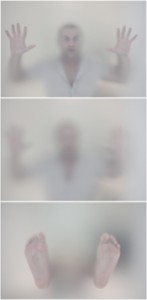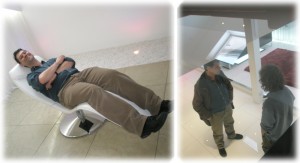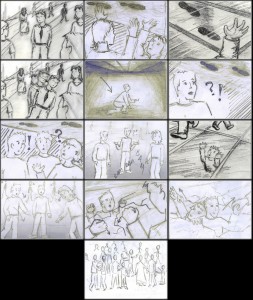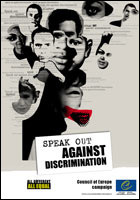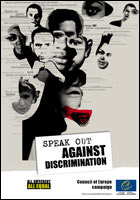Para leer este blog en español pincha aquí.
The day starts early for us, but the excitement charges our batteries more than the first coffee of the morning. The Director, 1st AD and Producer Assistant all meet in the office. We pick up the props and head off to North London.
Surprisingly, we get to the location too early. Its miraculous, London transport has for once worked perfectly. We meet the 2nd AD and the director of photography and go to knock Karim’s door. He’s the landlord of the location and wants to give us some instructions: where the actors are allowed to smoke, where we can put all the furniture, the safety measures that we have to keep in mind…
Some of the actors arrive really early too. They were also concerned about the usual transport surprises and prefer to arrive too early than not arrive at all. They make themselves comfortable upstairs and get to know each other. It will be a long wait. The beginning of the shoot is hard to get right. It is the key moment when most of the lighting has to be set up in the proper place.
The actors come downstairs. We start shooting all the “above the glass” shots. Mark Saunders, the director, give some directions and Claire Sharples, the 2nd AD, tell the actors where their initial position is. We still need more time. We crowd all together around the monitor to see how the shot will look. The overexposed effect is great, but we find several dark “stains”: the edge of one small bulb in the ceiling, one of the rubber tops of the tripod’s leg… we cover all the defects with white tape and eventually we see the clapperboard in front of the camera: Roll 1 Scene 1 Take 1
Some feelings characterize the first hours of the shoot, perfectionism and optimism. This is not bad, but it can entail some problems: we can easily run out of time. We all need to focus. The lunch break keeps being put off and people start getting nervous. Finally, we take the break and everybody seems satisfied with the job done so far.
The moment arrives to shoot the takes that made us to come to this location: the ones around the glass ceiling. The extras exchange contact numbers and leave the space.
Shots from “under the glass ceiling” work perfectly. Nevertheless, we are using some extra time that we haven’t contracted with the landlord, so we call him asking for one more hour. Costs start to rise, but we can’t let the pressure to drive us to take hasty decisions that will lead to problems in editing.
We move upstairs to shoot from “above the glass ceiling”. Lights are ready, camera in position, actors prepared… and suddenly, without prior warning, the camera switches off. We are already using a second extra hour. Karim, the landlord, arrives to the location. “We are having some technical problems”, how many times has he heard that excuse? Fortunately, the camera starts working again and we are able to take the last shot of the day.
Have we got everything we need? We think so. We tidy up, clean everything, put the furniture in place again… and leave the location. We talk about the day on our way back home. We are tired and a bit worried about having used two extra hours, but this is a normal issue in film production.
The next shooting day will be at Brunel University. We will use their green screen. It will be a quieter day and every take will be more planned because every shot has to be from specific distances and angles. There is no room for improvisation. On the plus side we don’t have time limit to use these premises so there is more time to get things right. It seems that it will be a journey without mishaps, but we won’t count our chickens before they are hatched.
If you want to see the pictures of the shooting, click here to visit flickr.
If you want to see the first samples of the video, click here.
If you want to get more information about the project “Speak out against discrimination”, click here.
For more information about Spectacle, click here.

